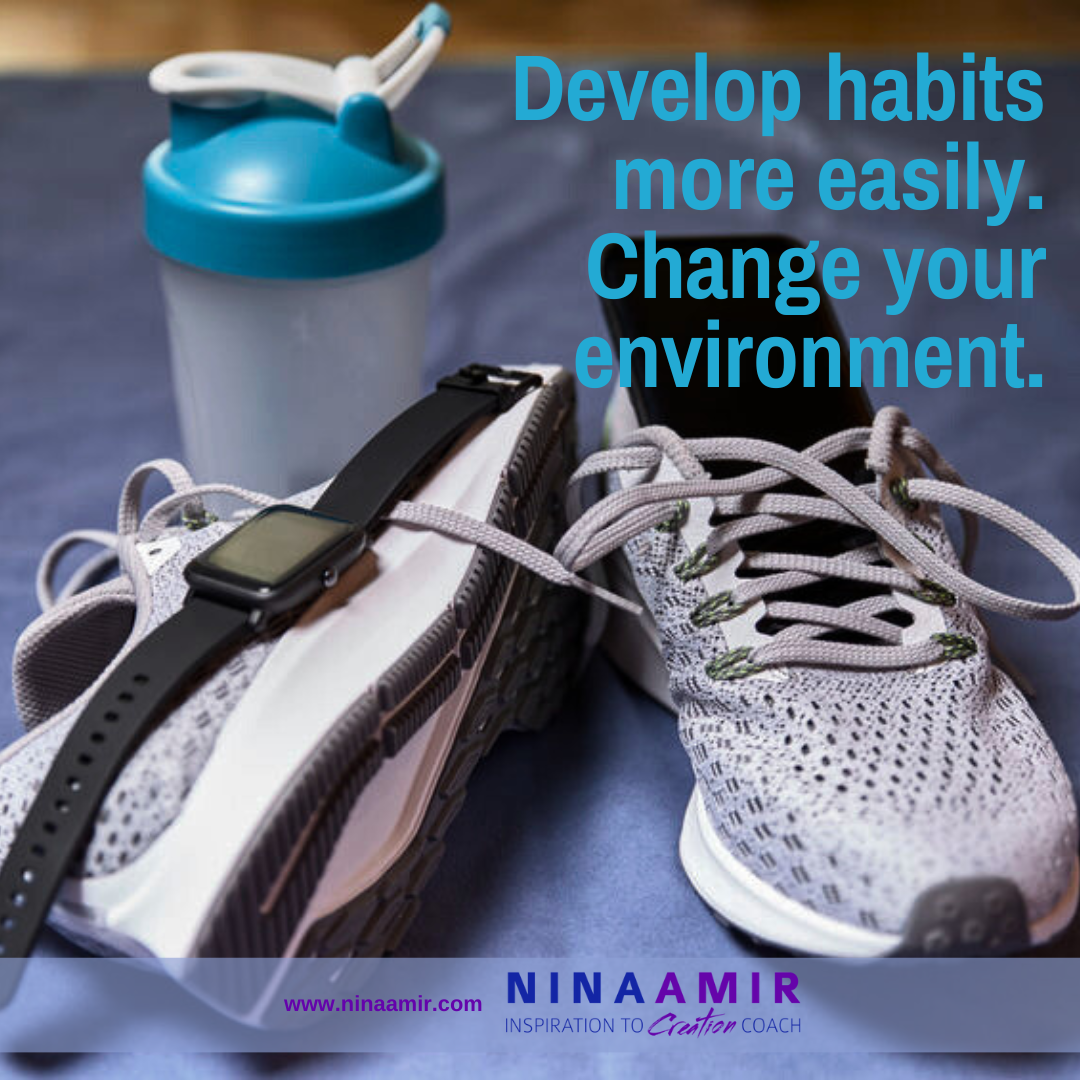There is a way to make changing or developing habits easier. Change your environment. When you alter the context in which you live, developing new behaviors becomes simpler.
Your current environment supports your everyday habits. For example, if your freezer always contains ice cream, maintaining your habit of eating ice cream is easy. Just go to the freezer and pull out a container. Or if your living room is outfitted with weights and a yoga mat, these cue you to work out daily. Therefore, you develop the habit of working out without much challenge.
Your environment helps you build and maintain supportive habits, enabling you to break unwanted habits, too. For instance, if you want to stop eating sugar, you can create this habit by not stocking your pantry, refrigerator, or freezer with cookies, candy, or ice cream. You’ll actually find it hard to eat sweets in this context. You’d have to leave the house to find something sweet to eat.
Positive and Negative Cues Help Build or Break Habits
As you probably realize, you can design your environment with positive and negative cues that help you break or build habits. So, suppose you want to develop the habit of drinking eight ounces of water per day. In that case, you can design a positive cue by placing water bottles in every room. When you see the bottles, you will remember to drink water. And, before you know it, you’ll have developed this desired habit.
If you want to break a habit, like smoking, remove all the ashtrays from your home and put up no-smoking signs. It then becomes more challenging to smoke or to feel comfortable lighting up a cigarette. (Of course, not buying cigarettes or having them in your home helps, too!)
Choose Supportive Environments
Pay close attention to the context within which you operate. Choose to spend time in environments that provide cues that help you develop desired habits rather than develop or maintain bad habits.
In other words, don’t spend time at a bar if you want to quit drinking alcohol. Instead, spend time at a coffee or smoothie shop.
Or, don’t spend time in the living room with the television on if you want to write a book. Instead, spend time in the public library or a room in your home designated as your office.
Different Contexts, Different Habits
Also, notice how you demonstrate different habits in different environments. You may habitually overeat when you eat at a restaurant, but you carefully measure your portions at home. Or maybe you are in the habit of focusing and being productive if you work in a coffee shop but procrastinate when working from home.
Consider also how your habits in specific contexts impact other habitual behaviors. For example, if you have the habit of reading in bed every night, your bed becomes associated with reading rather than sleeping. It’s no wonder, then, that you struggle to fall asleep at night.
Create a different relationship with your bed by only sleeping in it. Habitually get in bed, turn off the light, and say to yourself, “It’s time for sleep.” These actions change your mind’s association with the bed, and you will develop the habit of falling asleep quickly.
Of course, you also can read in a chair. Then, the bed becomes a cue to sleep.
Change Your Environment to Change Your Habits
The concept is simple: change your environment, and you change your habits.
Recall a time when you went on vacation. You weren’t in your typical environment—your home or office—and your habits likely changed. Maybe you slept later and drank more alcohol than usual. Your habits were different.
Maybe you want to write a book but feel challenged to develop a writing habit. You try to write every day sitting at the kitchen table. However, your environment cues you to do the laundry, feed the birds, walk the dog, and start cooking dinner instead. Your environment is not conducive to forming a writing habit.
But what if you go to a coffee shop every day to write? Instead of seeing laundry baskets, empty bird feeders, the dog staring at you, and the dinner ingredients stacked on the counter, you see other people working at their computers. The first day you write in this environment, you knock out 3,000 words without effort. And after a week, it seems like second nature to sit down with your latte and write. You’ve formed a writing habit.
Avoid Mixed-Use Spaces
A space used for more than one activity will result in confusing cues. That makes it hard to develop habits.
So, try to create spaces for individual activities. No mixed-use spaces. Then, focus on habits related to specific spaces.
Develop the habit of writing in your office, exercising in your garage, relaxing in the living room, or eating in the dining room.
That means the kitchen is for cooking—not working or eating. And you don’t read or surf the Internet in your office; you do that in the living room.
Create or Break Habits Quickly
Design your environment with habit formation in mind. And develop your habits in a context that helps, rather than hinders, your efforts at change.
As a result, you’ll find it much easier to create supportive habits and break unsupported ones. And you’ll never have to wait weeks or months to develop habits again. Instead, you’ll create or break habits quickly.
Have you found it easier to develop a habit in a conducive environment? Tell me in a comment below. And please share this post with a friend or on social media.
 It’s time to transform, is it not? Join the Inspired Creator Community. You probably already realize that you need to change from the inside out. That’s how you become a person who does the things that allow you to create your desires. As a member, you get access to intuitive transformational coaching, world-class personal growth coaching, and strategies for living a life that feeds your soul. And you will discover that you are a powerful creator able to create what you want (not what you don’t want). Join now!
It’s time to transform, is it not? Join the Inspired Creator Community. You probably already realize that you need to change from the inside out. That’s how you become a person who does the things that allow you to create your desires. As a member, you get access to intuitive transformational coaching, world-class personal growth coaching, and strategies for living a life that feeds your soul. And you will discover that you are a powerful creator able to create what you want (not what you don’t want). Join now!
Photo courtesy of luismicss



